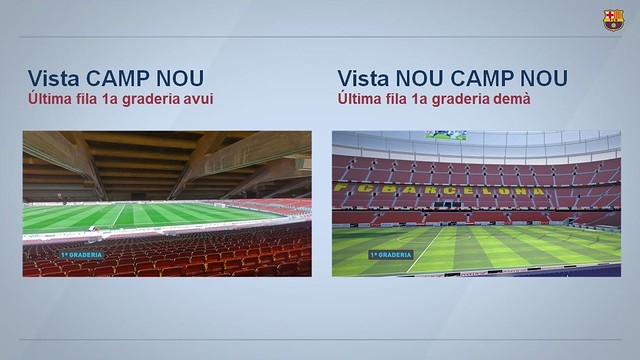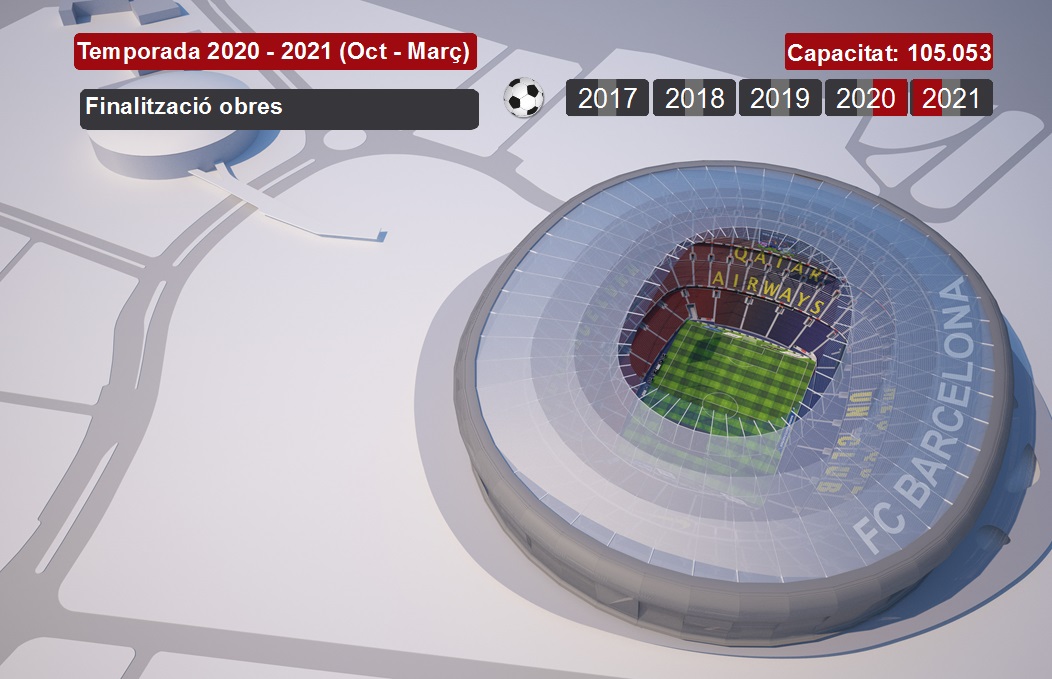More details about the new Camp Nou
The capacity will be 105,053, the interior construction of the stadium will rise from 40,000 m² to 104,000 m² and work will end in 2021, explained Jordi Moix
The first tier will be fully reformed, with more vertical seating offering much better views that they at present
The third tier will be completed on the west side of the ground, and a large roof will be installed over the whole of the terraces
At a press conference to present the new Barça stadium, the director of the Patrimonial Department, Jordi Moix, has presented further details of the proposal: the construction of a new Camp Nou over the current structure (being called the ‘ENEA’) will be put to a referendum on April 5 or 6. The cost will be 420 million euros. "Once accepted, and as the project has been carefully planned and defined, we will be able to avoid fluctuations in costs”, he insisted. It is a highly ambitious project – the current interior construction of the Camp Nou occupies 40,000 m², but once the work has been completed, that figure will have risen to 104,000 m².
Moix started by explaining issues concerning the general physical layout of the new stadium, whose exact capacity will be 105,053 spectators. The Camp Nou will continue to consist of three tiers. The first (lowest) will be completely rebuilt, being more vertical and offering much better views. The second will be the same, although some changes will make it more comfortable. And the third (top) tier, which currently only reaches round a section of the full perimeter will be extended to cover the west side of the stadium too.
Due to these changes, slightly wider seats will be possible, and all of the passages will be at least 1.20 metres wide. All of the seats will be protected from the elements by a roof, there will be a new perimeter ring containing different services, a full range of elevators, and the floors, currently on different levels, will be streamlined, thus avoiding the presence of so many unnecessary stairways. The ENEA project will also provide 5,000 parking spaces as well as a whole range of new commercial and operative features.
No effect on the team
Jordi Moix also explained how the construction will be done in phases. The work will start in 2017 with the demolishing of the South and North Goal terraces.
The whole process will take four summers and three and a half seasons, but the football team will be able to continue playing matches in the stadium regardless, and very few spectators will need to move. Moix explained that in order to limit the inconvenience to fans as much as possible, the construction will be done by phases and zones. In the summer, work will be done on the seating areas, and during the football season, the inner and outer sections of the main construction will be developed. The work should end in March 2021, but the directors wished to make it clear that this is still just an estimated outline, and that planning, licensing and other matters will no doubt cause certain adjustments.





